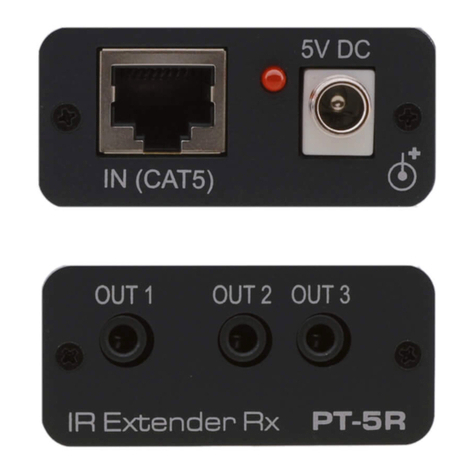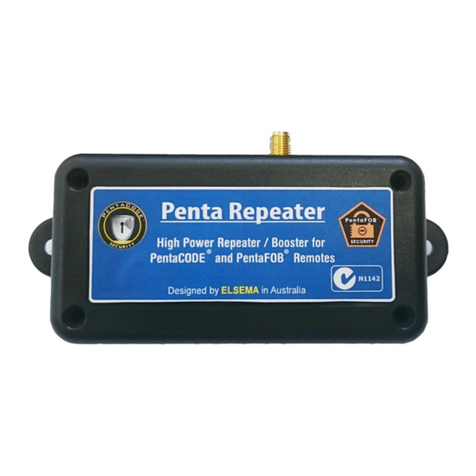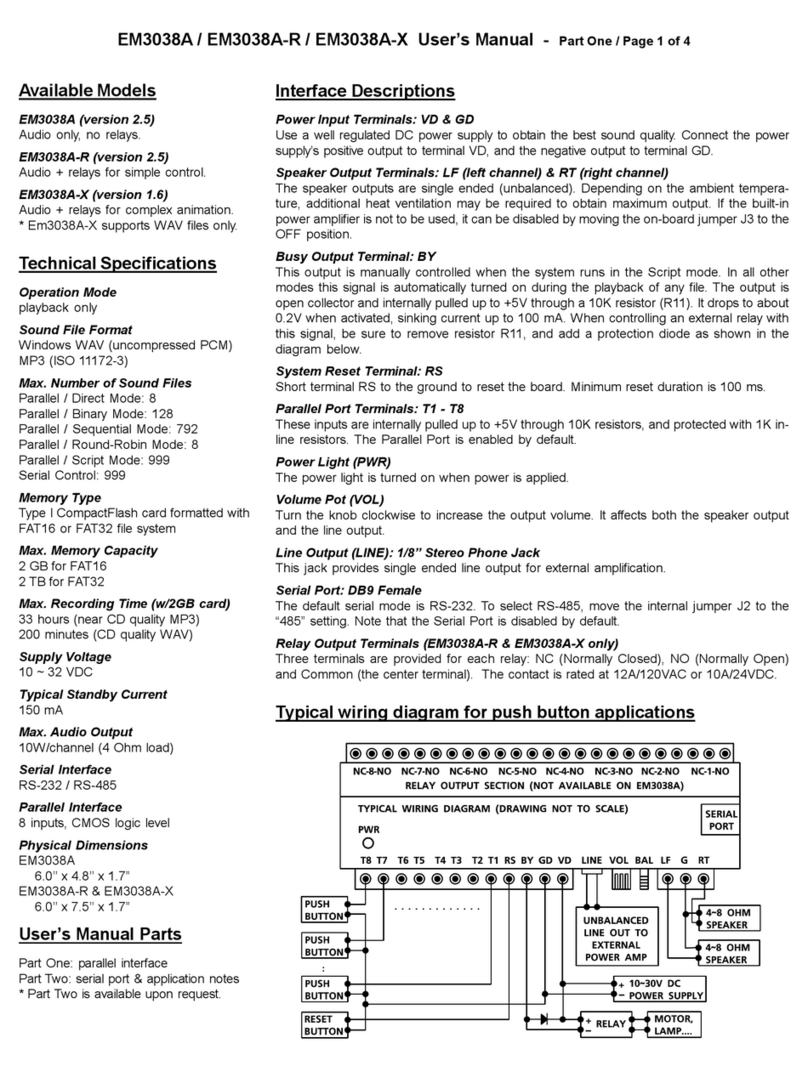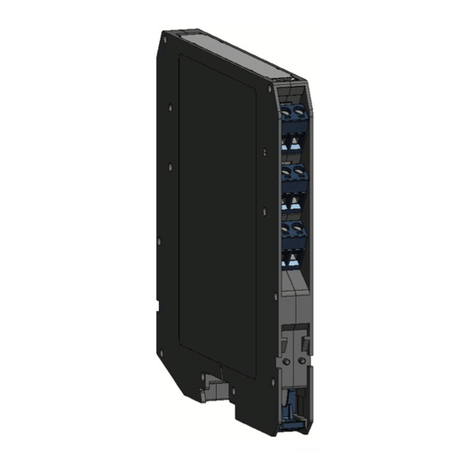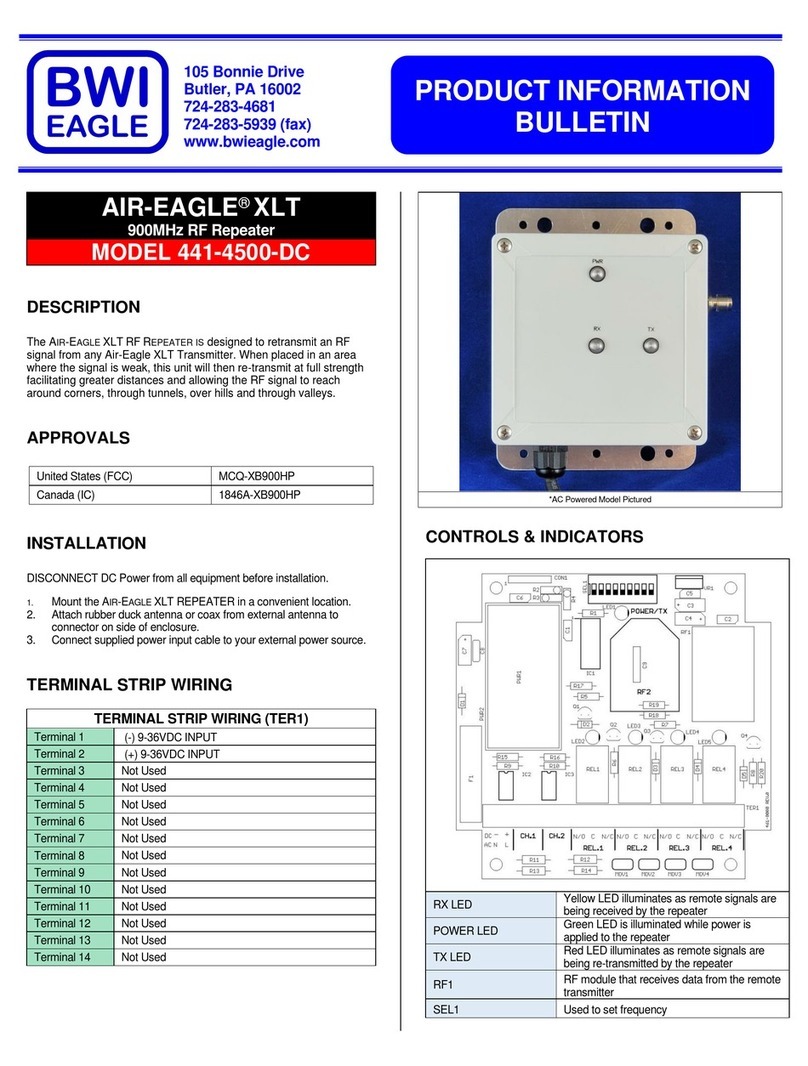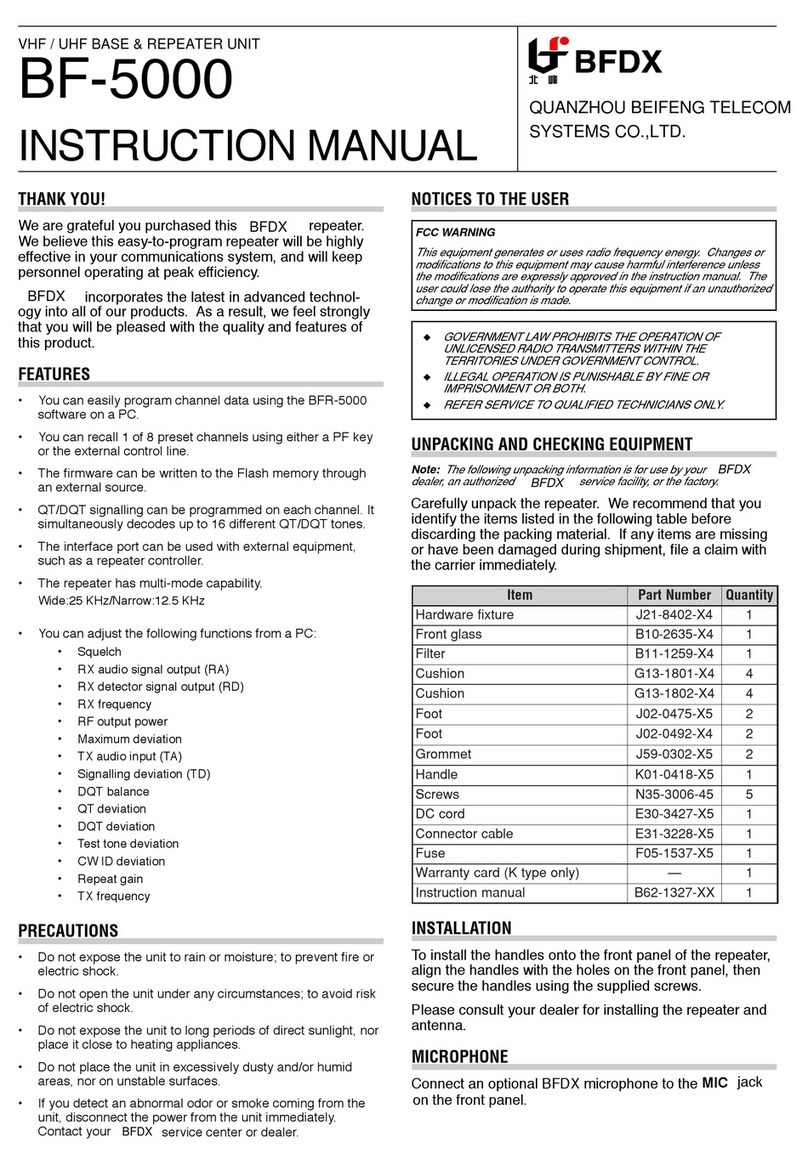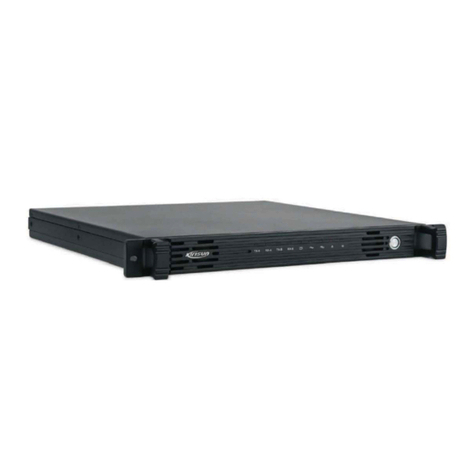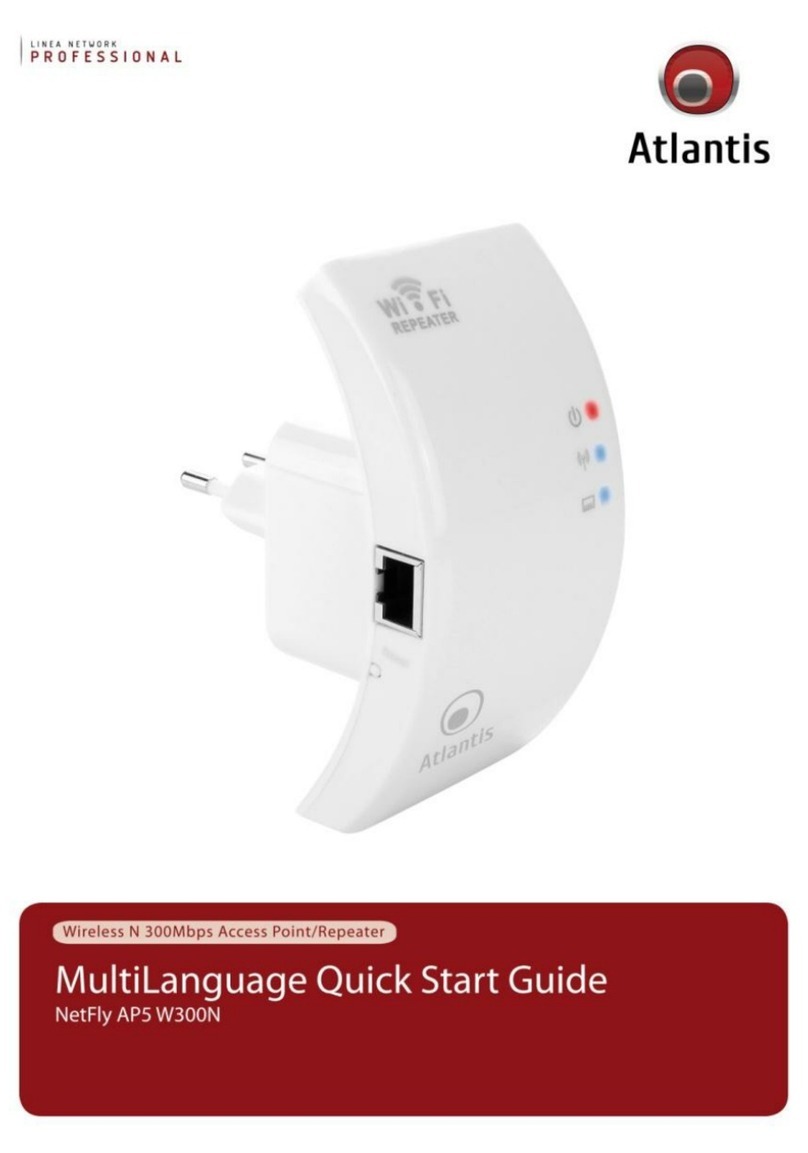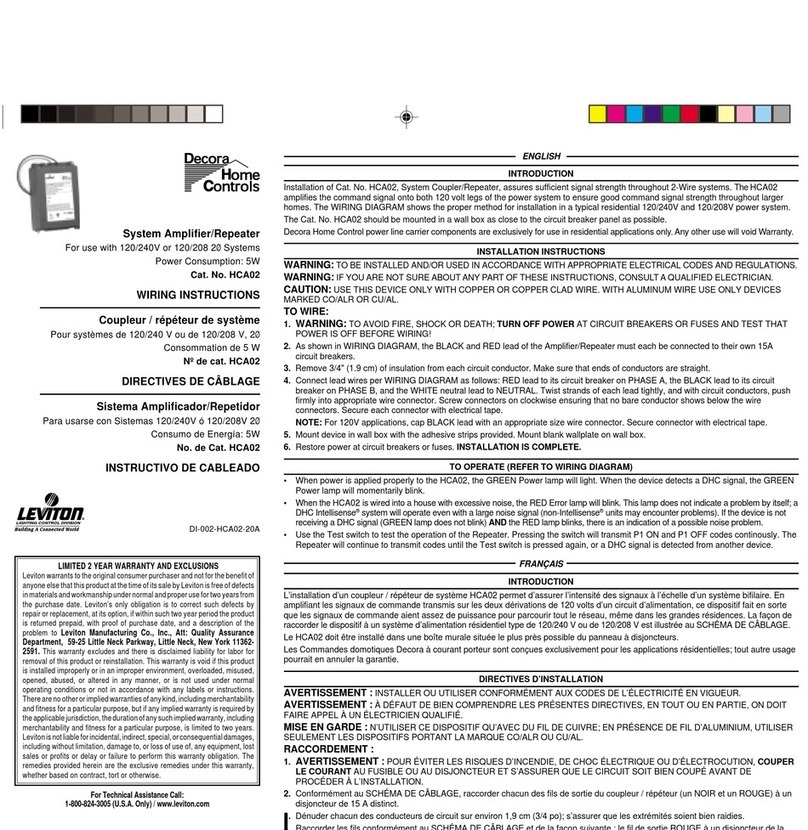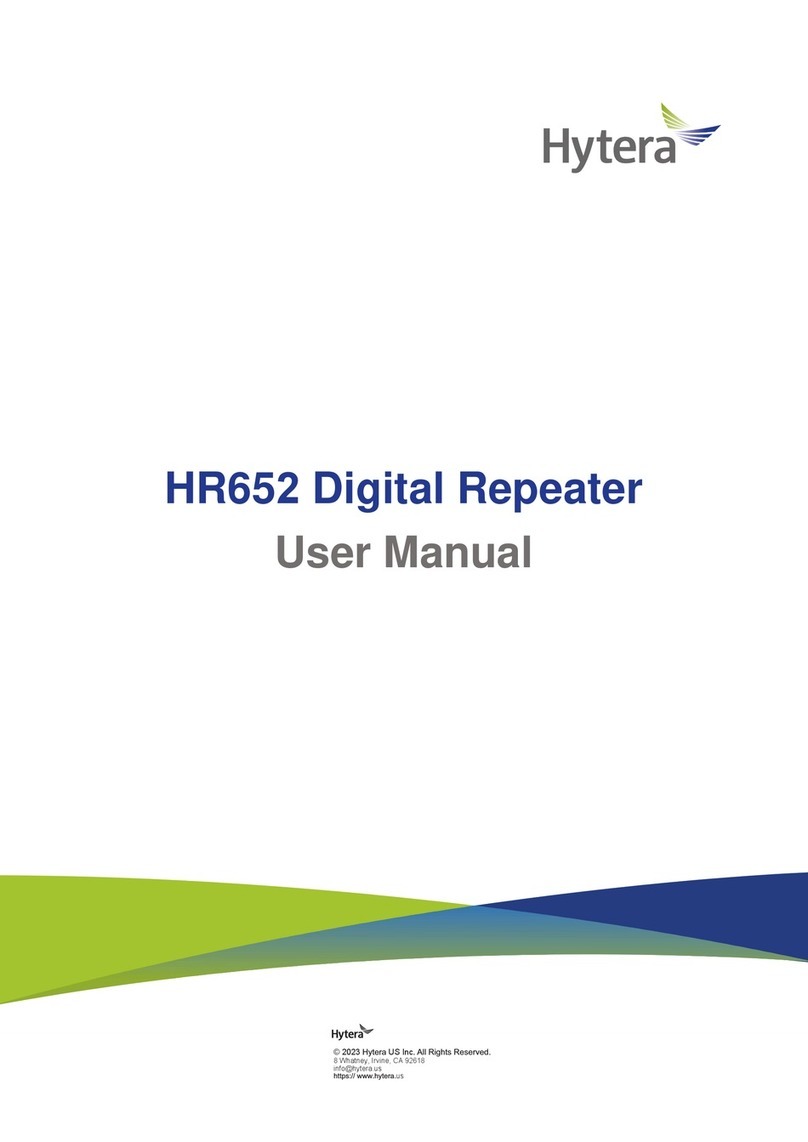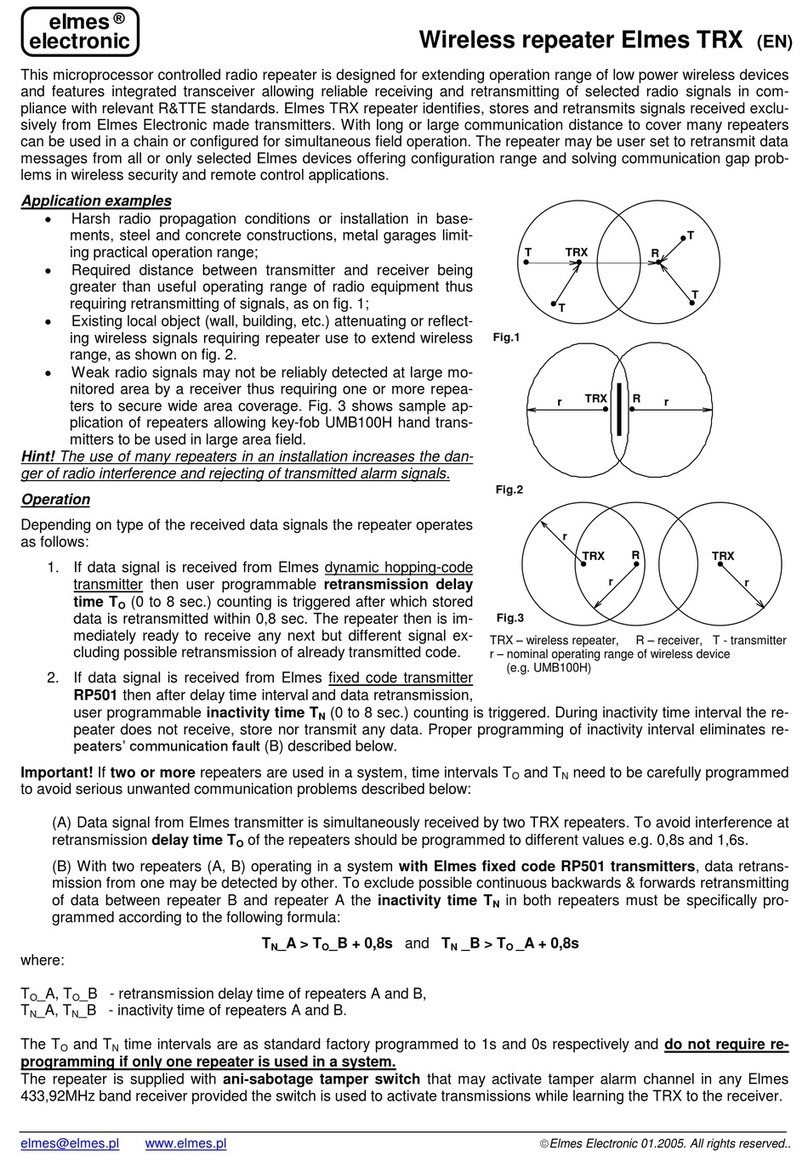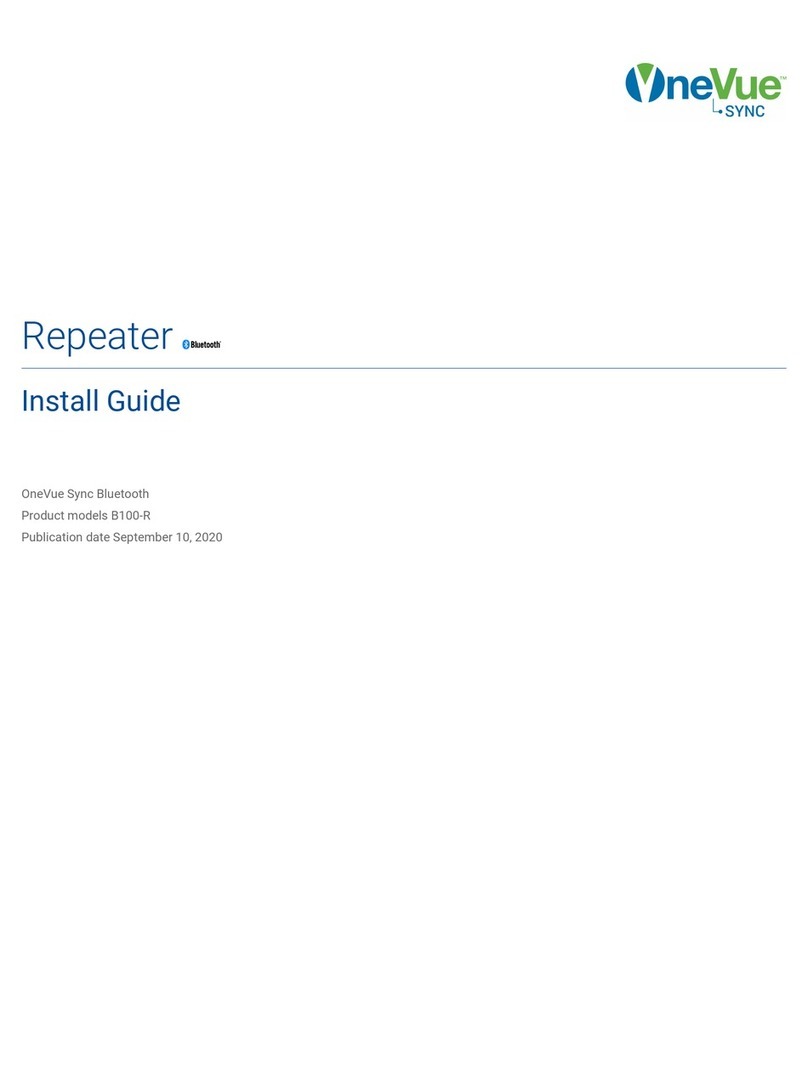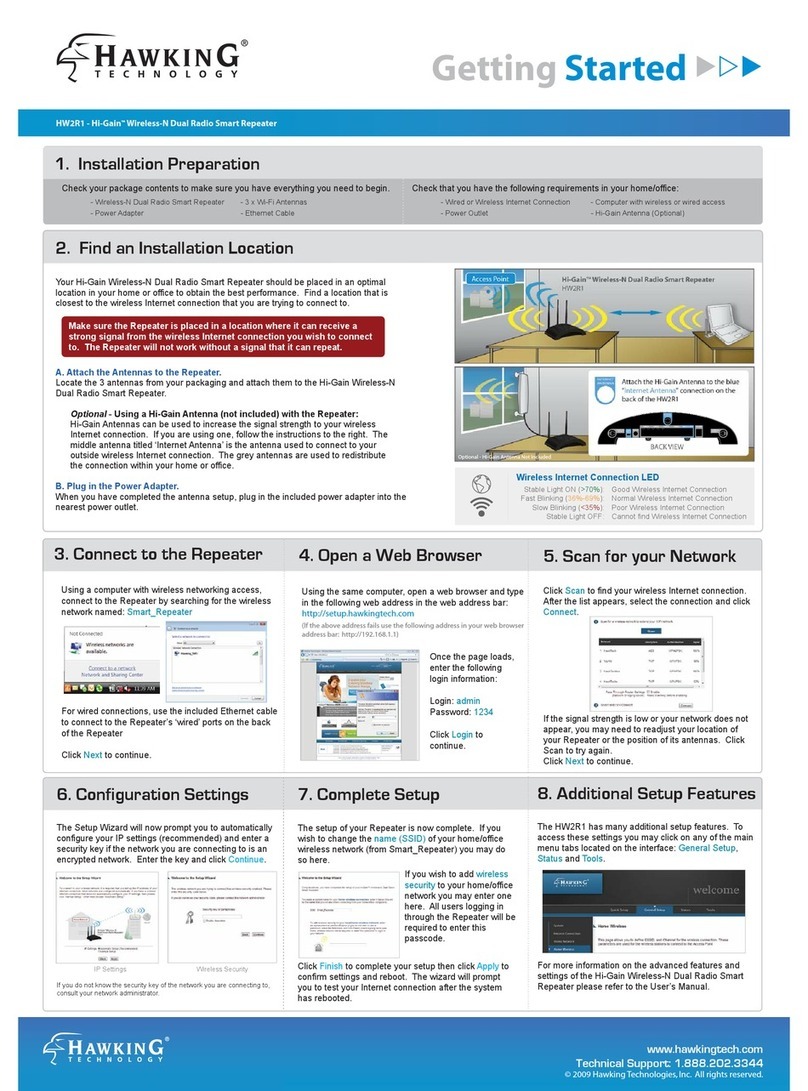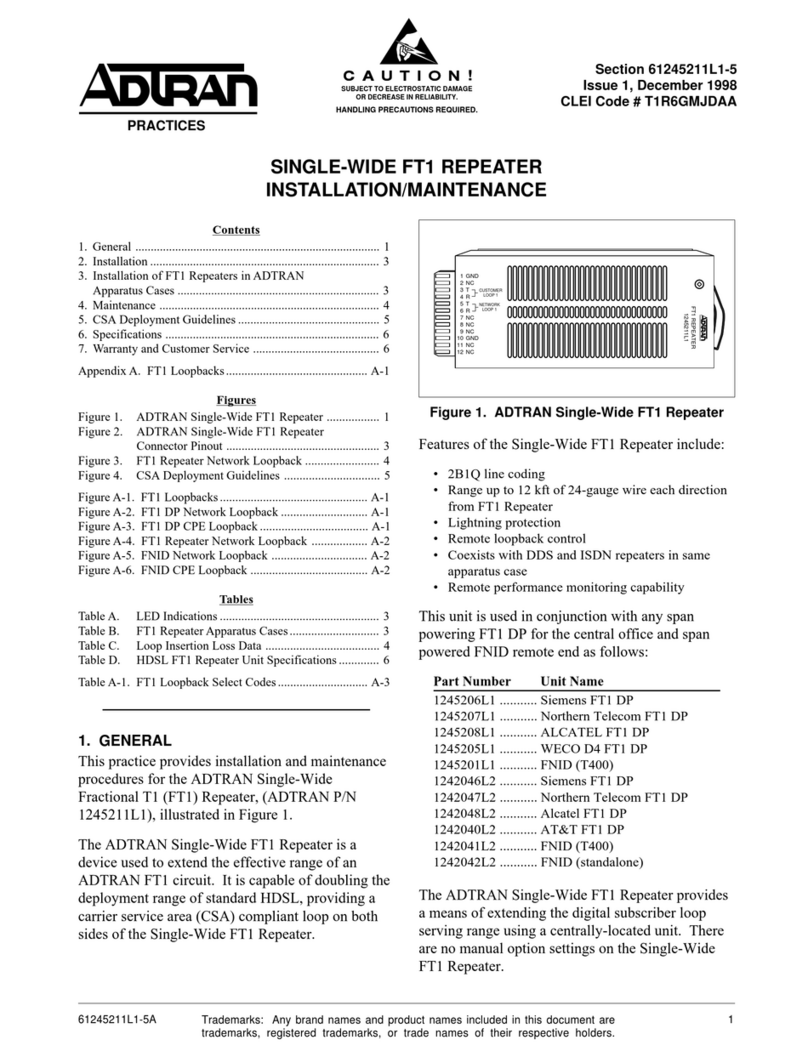Lindy 52061 User manual

© LINDY ELECTRONICS LIMITED & LINDY-ELEKTRONIK GMBH - FIRST EDITION (November 2011)
Wi-Fi Repeater
Quick Installation Guide English
LINDY No. 52061
www.lindy.com


Configuring the Wi-Fi Repeater
You can configure your repeater using the Rj-45
cable or wirelessly. We suggest you use the cable
included.
Configuring with a cable / wirelessly
Plug the Wi-Fi repeater in to a wall socket and
switch on.
Cabled - connect your computer/laptop to the
repeater using the RJ-45 cable enclosed.
Wireless - Click on the network icon or in
the taskbar on your desktop. Select the Wi-Fi
Repeater and click “Connect”.
In the “Control Panel” go to “View network status
and tasks”, then click “Manage network
connections”. Right click “Local area network”, and
then select “Properties”. In the next window,
highlight “Internet protocol version 4 (TCP/IPv4)”
and then click “Properties”.
To set the IP address manually, select “Use the
following IP address” then manually type “IP
address” 192.168.10.x (x is any number from 2 to
254). Then manually type “Subnet mask”
255.255.255.0. Type the routers LAN IP address
in the “Default gateway” box.
Open a web browser and type http://192.168.10.1 in
the browsers address box. This is the default IP
address for this device.
The login screen will appear, enter the username
“admin” and the password “admin” in to the
appropriate fields and click OK.

When you have successfully logged in, select “Setup wizard”. You will then be able to
select one of two options, choose “Wireless repeater mode” and click next to continue.
Then click on “Repeater – Onekey setting”
Wait a few seconds and when the box below appears, click on “Wireless network
selection”. On the next screen click “Refresh List” and select the SSID you wish to connect
too. Click next to continue.
On the next screen, do not change any of the settings; just insert the password of your
network. Then click on “Apply and reboot”. Click “OK” to confirm, the repeater will reboot.
Wait for 30 seconds and when you log back into the repeater the “Clone SSID” will show
the same name as your router. Your Wi-Fi Repeater is now ready for use.
Please visit the LINDY website to view a more detailed manual for this product.

Declaration of Conformity
LINDY Part Number: 52016
Description:Wi-Fi Repeater
We, LINDY Electronics LTD, hereby declare that the above product is in conformity with the EU Directive
004/108/EC (Electromagnetic Compatibility), and 1999/5/EC R&TTE (Radio and Telecommunications
Terminal Equipment).
The following standards were used to evaluate the product for electromagnetic compatibility:
Standard Number
ETSI EN 300 3 8 V1.7.1 ( 006-10)
EN 6 311: 008
ETSI EN 301 489-1 V1.8.1 ( 008-04)
ETSI EN 301 489-17 V .1.1 ( 009-05)
EN 550 /A1: 007
EN 61000-3- /A : 009
EN 61000-3-3: 008
EN 550 4/A : 003
Date: 0 December 011
Signature:
Name: Darren N. Casey
Position: Managing Director, LINDY Electronics LTD
LINDY Supplier Office Reference: 31
st
October 011
LINDY Electronics Ltd.
Sadler Forster Way
Teesside Industrial Estate
Thornaby, Stockton-on-Tees
TS17 9JY, England


CE/FCC & Recycling Information
CE Certification
This equipment complies with the requirements relating to
further Standards cited therein.
FCC Certification
This equipment has been tested and found to comply with the limits for a Class B digital device, pursuant to part 15 of the F
Rules. These limits are desi
gned to provide reasonable protection against harmful interference in a residential installation.
You are cautioned that changes or modification not expressly approved by the party responsible for compliance could void your
authority to operate the equipment.
This device complies with part 15 of the FCC Rules.
Operation is subject to the following two conditions:
1.
This device may not cause harmful interference, and
2.
This device must accept any interference received, including interference that may cause
WEEE (Waste of Electrical and Electronic Equipment),
Recycling of Electronic Products
In 2006 the European Union introduced regulations (WEEE) for the collection and recycling of all waste electrical and electro
equipment. It
is no longer allowable to simply throw away electrical and electronic equipment. Instead, these products must
enter the recycling process.
Each individual EU member state has implemented the WEEE regulations into national law in slightly different ways. P
follow your national law when you want to dispose of any electrical or electronic products. More details can be obtained from
your national WEEE recycling agency.
Germany
Die Europäische Union hat mit der WEEE Direktive umfassende Regelungen für
Elektro-
und Elektronikprodukten geschaffen. Diese wurden von der Bundesregierung im Elektro
ElektroG in deutsches Recht umgesetzt. Dieses Gesetz verbietet vom 24.März 2006 an das Entsor
auch alten, Elektro-
und Elektronikgeräten über die Hausmülltonne! Diese Geräte müssen den lokalen Sammelsystemen bzw.
örtlichen Sammelstellen zugeführt werden! Dort werden sie kostenlos entgegen genommen. Die Kosten für den weiter
Recyclingprozess übernimmt die Gesamtheit der Gerätehersteller.
France
En 2006, l'union Européenne a introduit la nouvelle réglementation (DEEE) pour le recyclage de tout équipement électrique e
électronique.
Chaque Etat membre de l’ Union
Européenne a mis en application la nouvelle réglementation DEEE de manières légèrement
différentes. Veuillez suivre le décret d’application correspondant à l’élimination des déchets électriques ou électroniques d
votre pays.
Italy
Nel 2006 l’unione eu
ropea ha introdotto regolamentazioni (WEEE) per la raccolta e il riciclo di apparecchi elettrici ed elettronici.
Non è più consentito semplicemente gettare queste apparecchiature, devono essere riciclate. Ogni stato membro dell’ EU ha
tramutato le direttiv
e WEEE in leggi statali in varie misure. Fare riferimento alle leggi del proprio Stato quando si dispone di un
apparecchio elettrico o elettronico.
Per ulteriori dettagli fare riferimento alla direttiva WEEE sul riciclaggio del proprio Stato.
CE/FCC & Recycling Information
This equipment complies with the requirements relating to
Electromagnetic Compatibility
Standards
This equipment has been tested and found to comply with the limits for a Class B digital device, pursuant to part 15 of the F
gned to provide reasonable protection against harmful interference in a residential installation.
You are cautioned that changes or modification not expressly approved by the party responsible for compliance could void your
This device complies with part 15 of the FCC Rules.
Operation is subject to the following two conditions:
This device may not cause harmful interference, and
This device must accept any interference received, including interference that may cause
WEEE (Waste of Electrical and Electronic Equipment),
Recycling of Electronic Products
In 2006 the European Union introduced regulations (WEEE) for the collection and recycling of all waste electrical and electro
is no longer allowable to simply throw away electrical and electronic equipment. Instead, these products must
Each individual EU member state has implemented the WEEE regulations into national law in slightly different ways. P
follow your national law when you want to dispose of any electrical or electronic products. More details can be obtained from
Die Europäische Union hat mit der WEEE Direktive umfassende Regelungen für
die Verschrottung und das Recycling von
und Elektronikprodukten geschaffen. Diese wurden von der Bundesregierung im Elektro
-
ElektroG in deutsches Recht umgesetzt. Dieses Gesetz verbietet vom 24.März 2006 an das Entsor
und Elektronikgeräten über die Hausmülltonne! Diese Geräte müssen den lokalen Sammelsystemen bzw.
örtlichen Sammelstellen zugeführt werden! Dort werden sie kostenlos entgegen genommen. Die Kosten für den weiter
Recyclingprozess übernimmt die Gesamtheit der Gerätehersteller.
En 2006, l'union Européenne a introduit la nouvelle réglementation (DEEE) pour le recyclage de tout équipement électrique e
Européenne a mis en application la nouvelle réglementation DEEE de manières légèrement
différentes. Veuillez suivre le décret d’application correspondant à l’élimination des déchets électriques ou électroniques d
ropea ha introdotto regolamentazioni (WEEE) per la raccolta e il riciclo di apparecchi elettrici ed elettronici.
Non è più consentito semplicemente gettare queste apparecchiature, devono essere riciclate. Ogni stato membro dell’ EU ha
e WEEE in leggi statali in varie misure. Fare riferimento alle leggi del proprio Stato quando si dispone di un
Per ulteriori dettagli fare riferimento alla direttiva WEEE sul riciclaggio del proprio Stato.
1
st
Edition
Standards
EN55022/EN55024 and the
This equipment has been tested and found to comply with the limits for a Class B digital device, pursuant to part 15 of the F
CC
gned to provide reasonable protection against harmful interference in a residential installation.
You are cautioned that changes or modification not expressly approved by the party responsible for compliance could void your
This device must accept any interference received, including interference that may cause
undesired operation.
In 2006 the European Union introduced regulations (WEEE) for the collection and recycling of all waste electrical and electro
nic
is no longer allowable to simply throw away electrical and electronic equipment. Instead, these products must
Each individual EU member state has implemented the WEEE regulations into national law in slightly different ways. P
lease
follow your national law when you want to dispose of any electrical or electronic products. More details can be obtained from
die Verschrottung und das Recycling von
-
und Elektronikgerätegesetz –
ElektroG in deutsches Recht umgesetzt. Dieses Gesetz verbietet vom 24.März 2006 an das Entsor
gen von entsprechenden,
und Elektronikgeräten über die Hausmülltonne! Diese Geräte müssen den lokalen Sammelsystemen bzw.
örtlichen Sammelstellen zugeführt werden! Dort werden sie kostenlos entgegen genommen. Die Kosten für den weiter
en
En 2006, l'union Européenne a introduit la nouvelle réglementation (DEEE) pour le recyclage de tout équipement électrique e
t
Européenne a mis en application la nouvelle réglementation DEEE de manières légèrement
différentes. Veuillez suivre le décret d’application correspondant à l’élimination des déchets électriques ou électroniques d
e
ropea ha introdotto regolamentazioni (WEEE) per la raccolta e il riciclo di apparecchi elettrici ed elettronici.
Non è più consentito semplicemente gettare queste apparecchiature, devono essere riciclate. Ogni stato membro dell’ EU ha
e WEEE in leggi statali in varie misure. Fare riferimento alle leggi del proprio Stato quando si dispone di un
LINDY No. 52061
Edition
November 2011
www.lindy.com
Other manuals for 52061
1
Table of contents
Other Lindy Repeater manuals
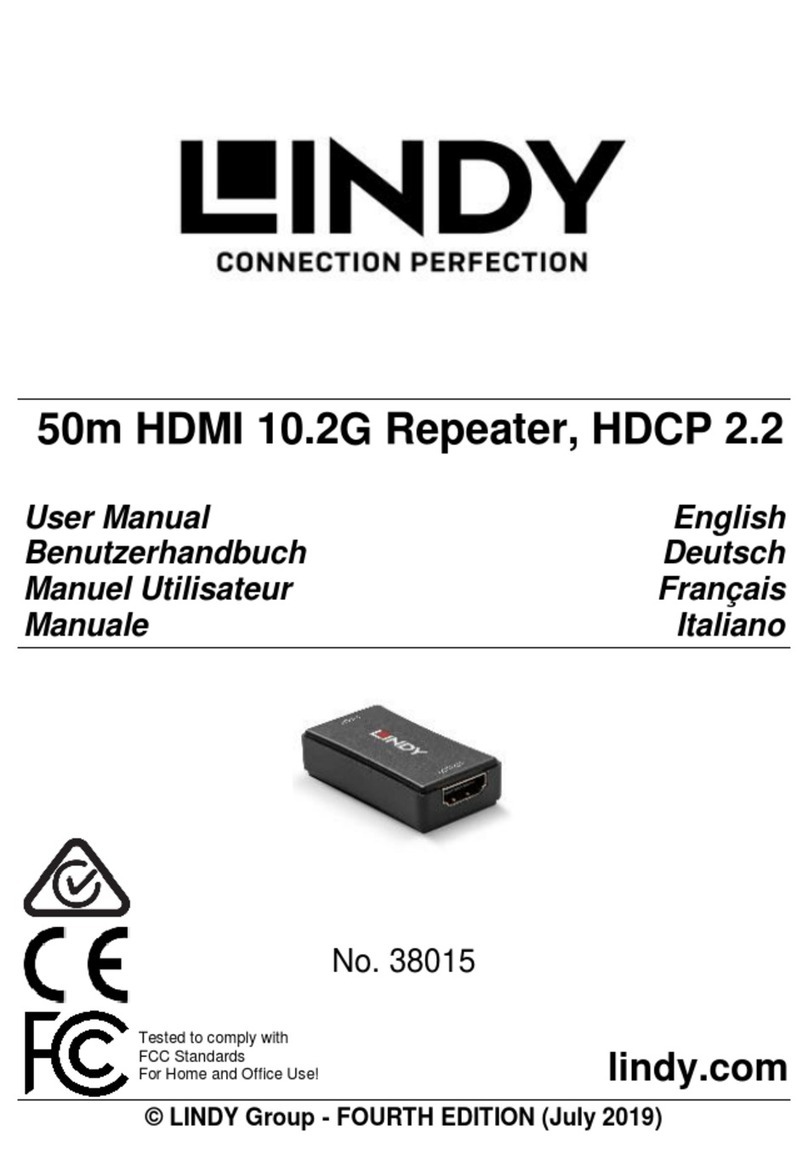
Lindy
Lindy 38015 User manual
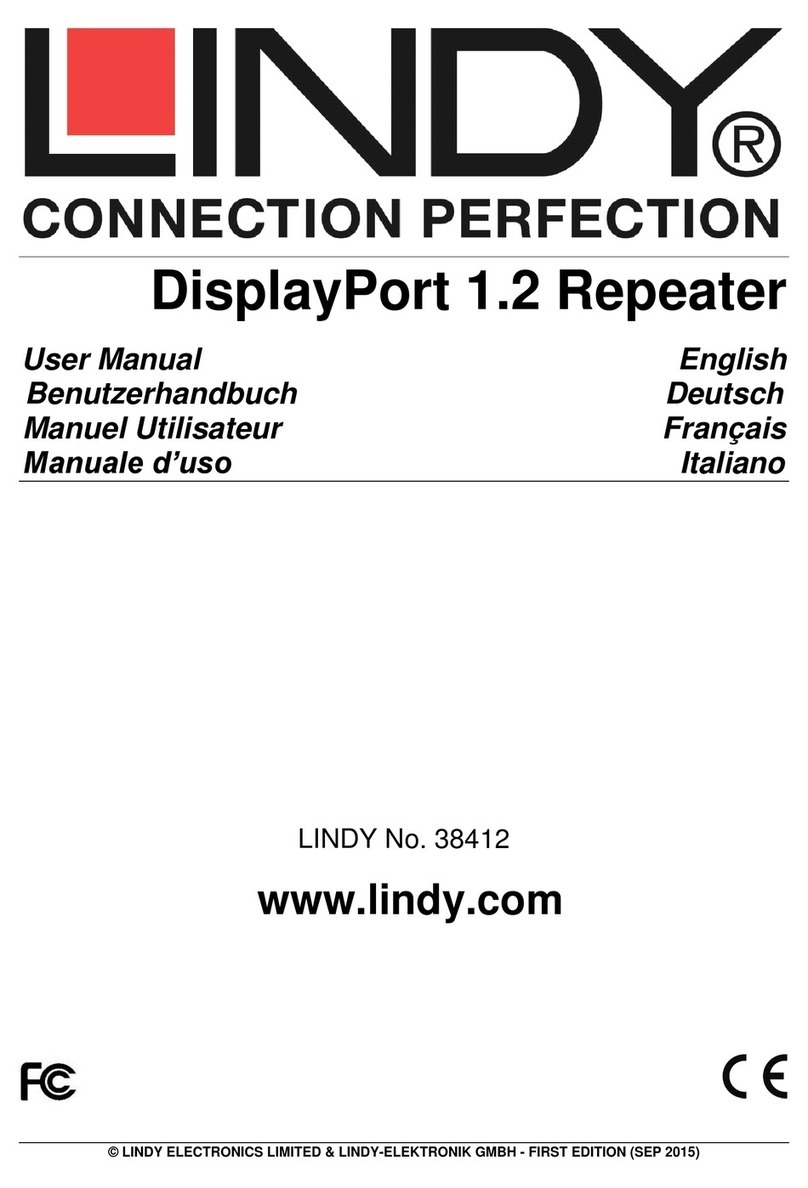
Lindy
Lindy DisplayPort 1.2 Repeater User manual
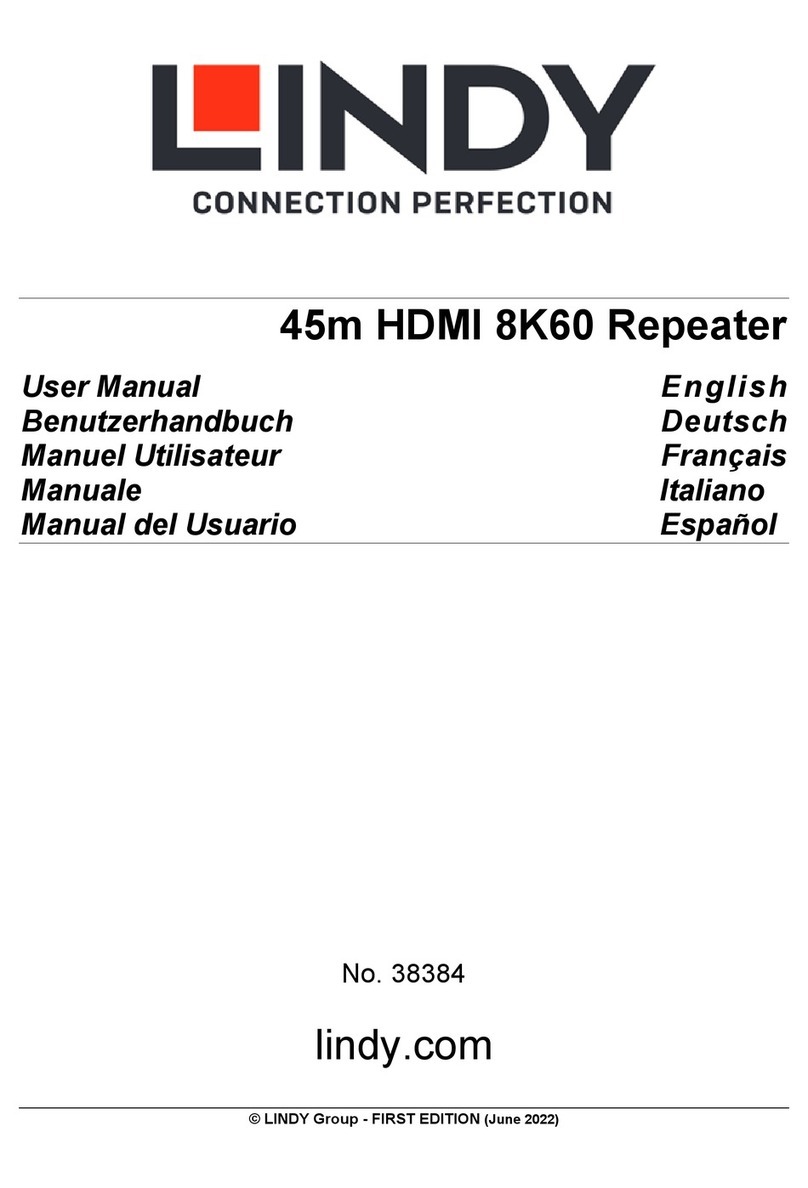
Lindy
Lindy 38384 User manual
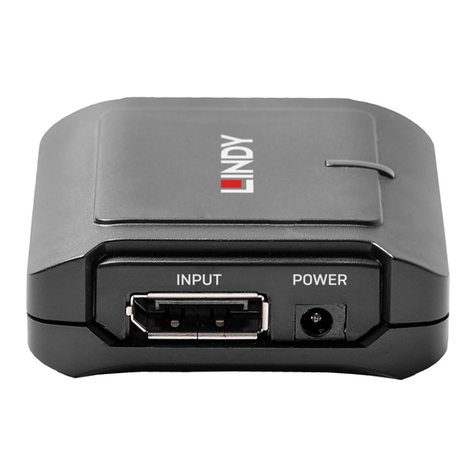
Lindy
Lindy DisplayPort 38415 User manual
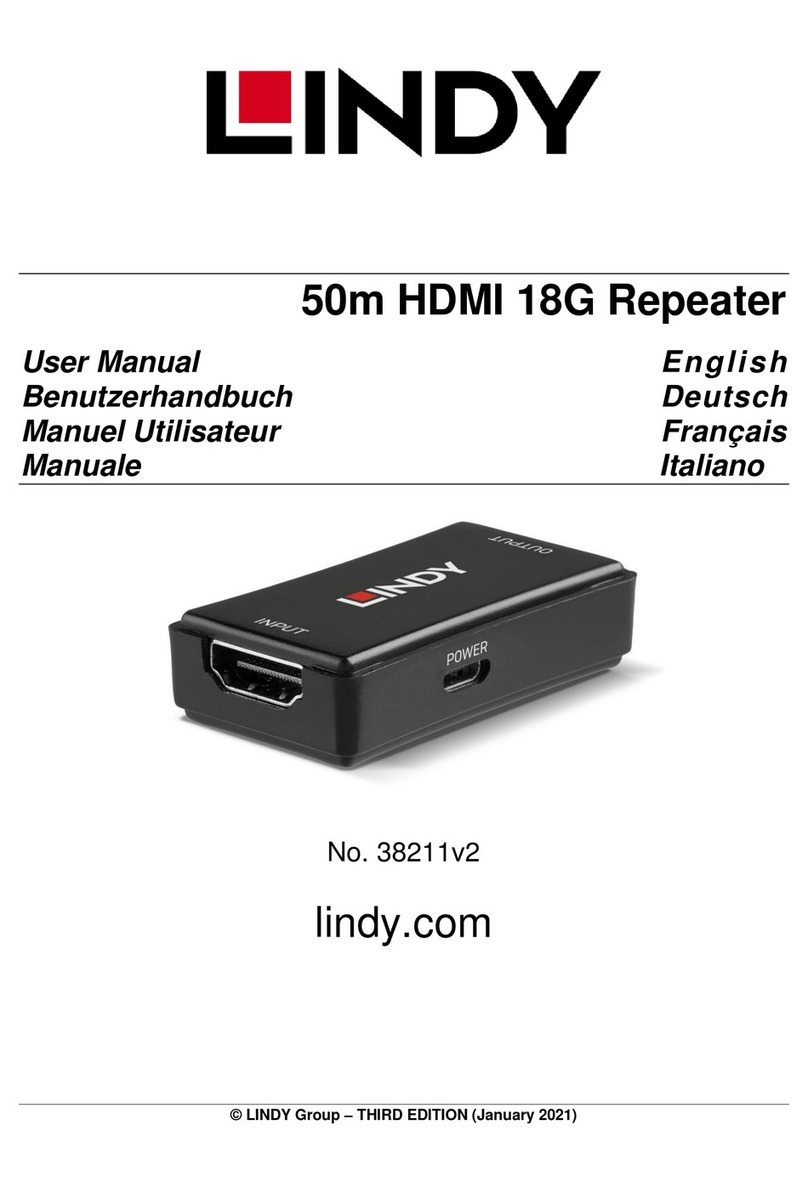
Lindy
Lindy 38211 v2 User manual
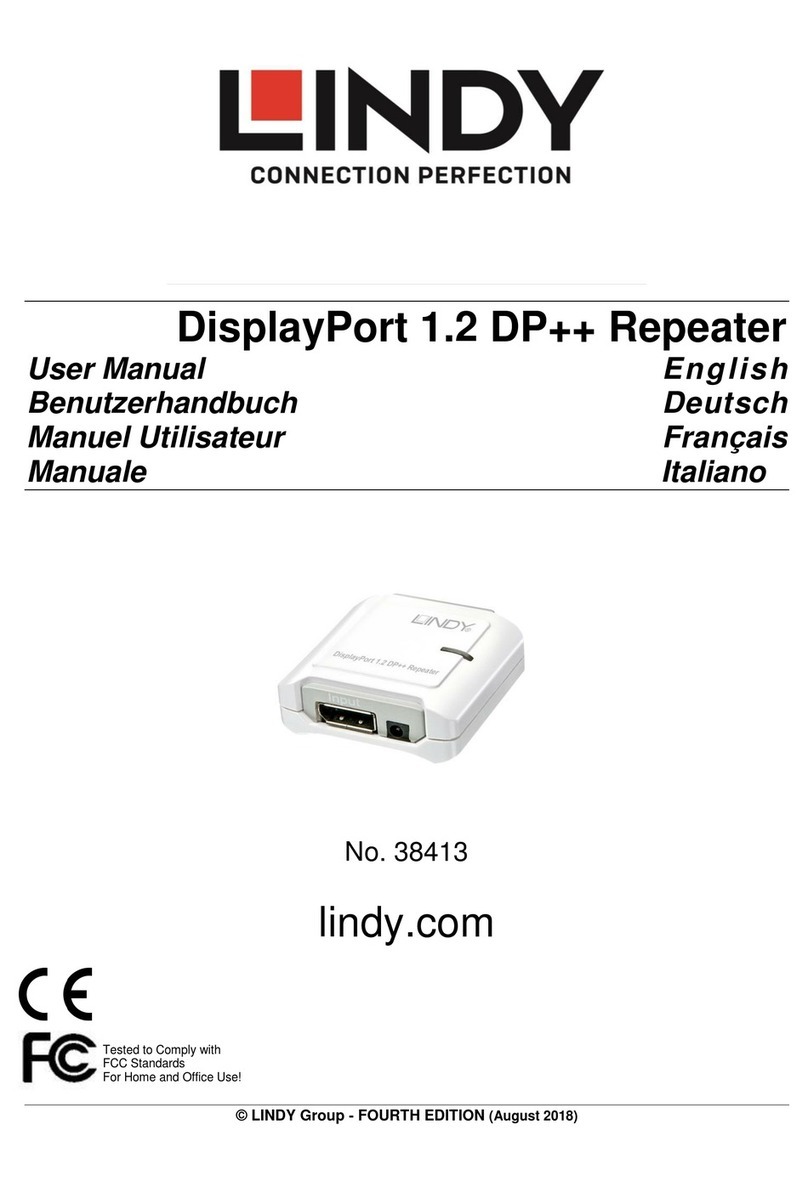
Lindy
Lindy 38413 User manual
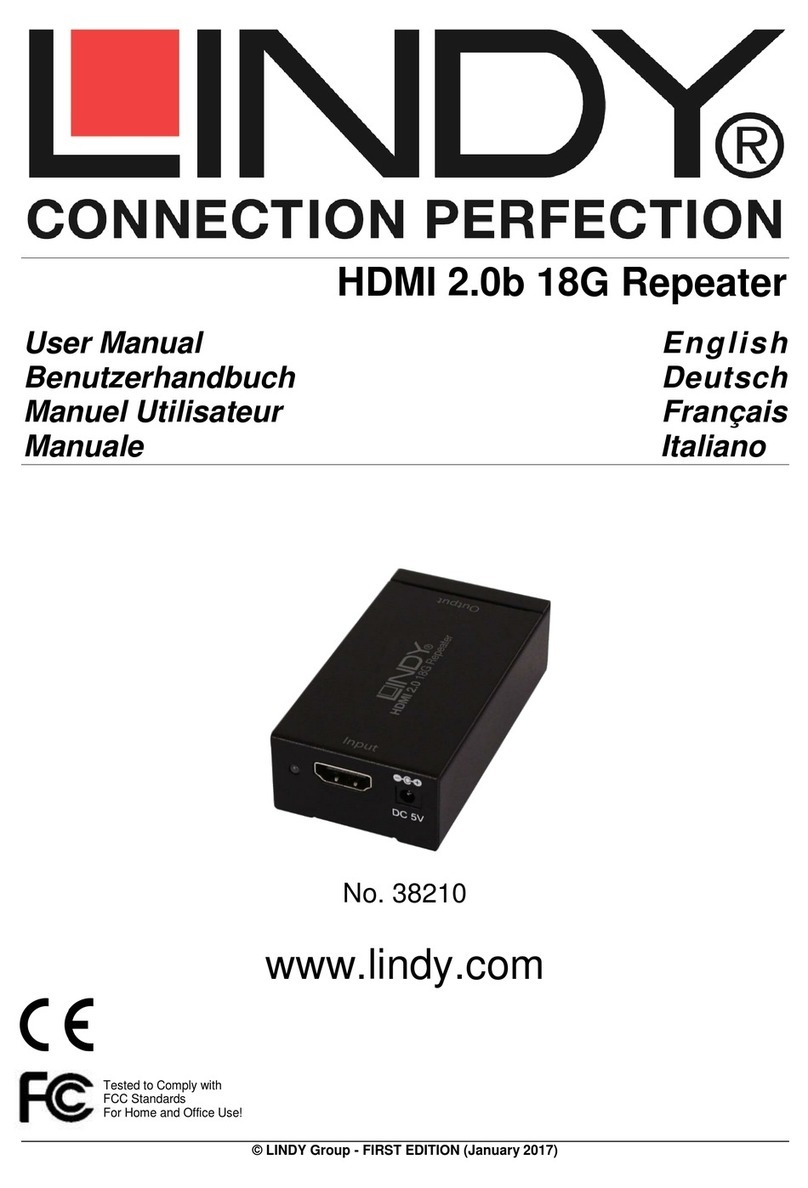
Lindy
Lindy 38210 User manual
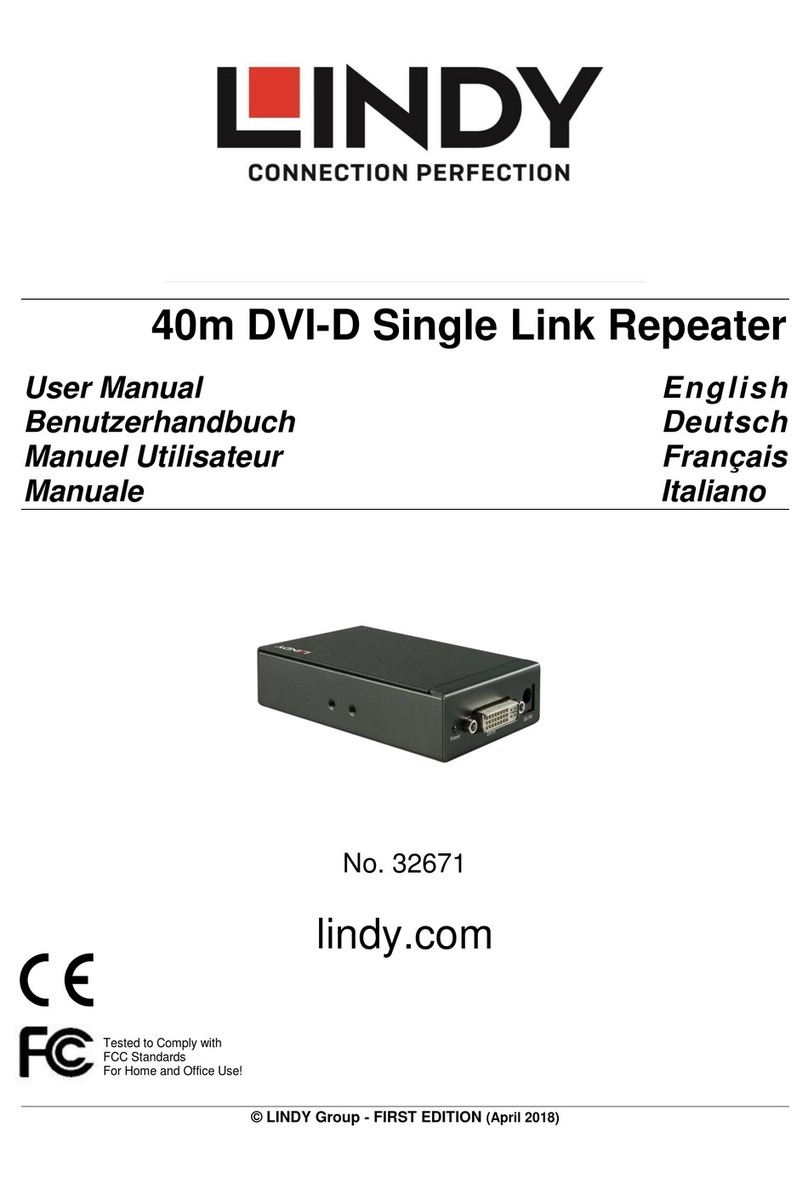
Lindy
Lindy 32671 User manual
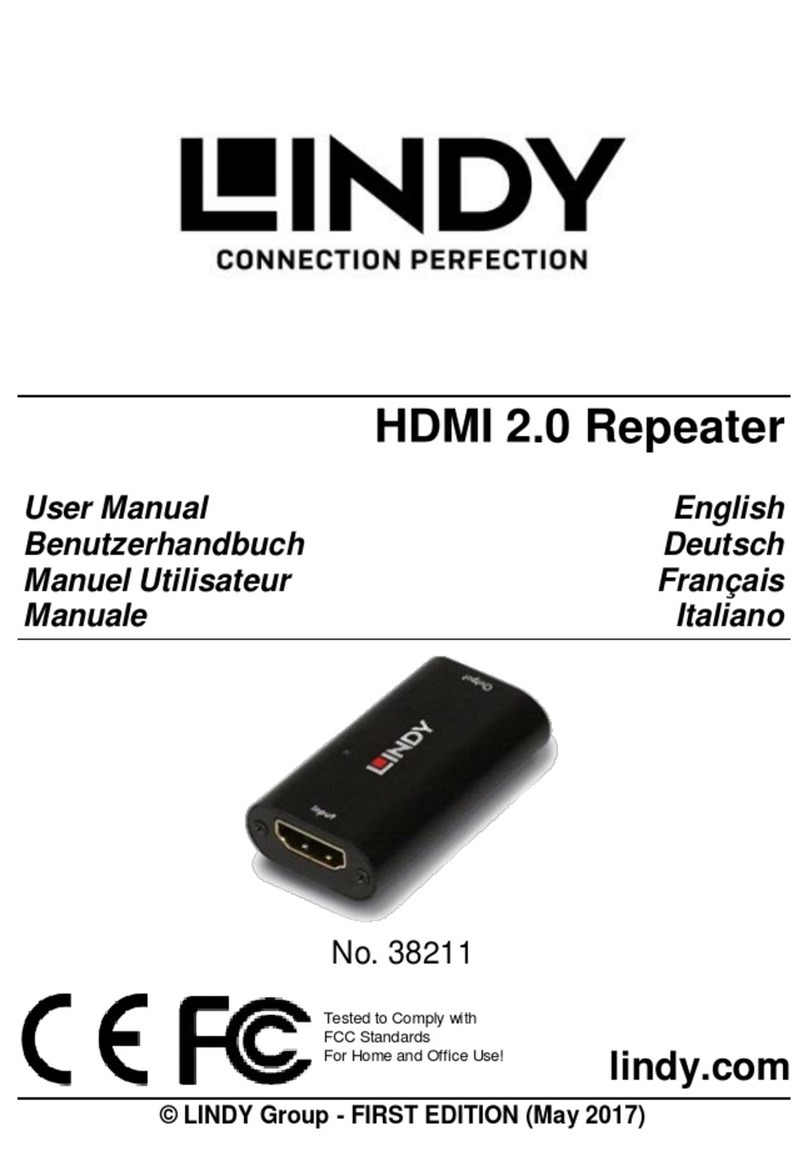
Lindy
Lindy 38211 User manual

Lindy
Lindy 42709 User manual

